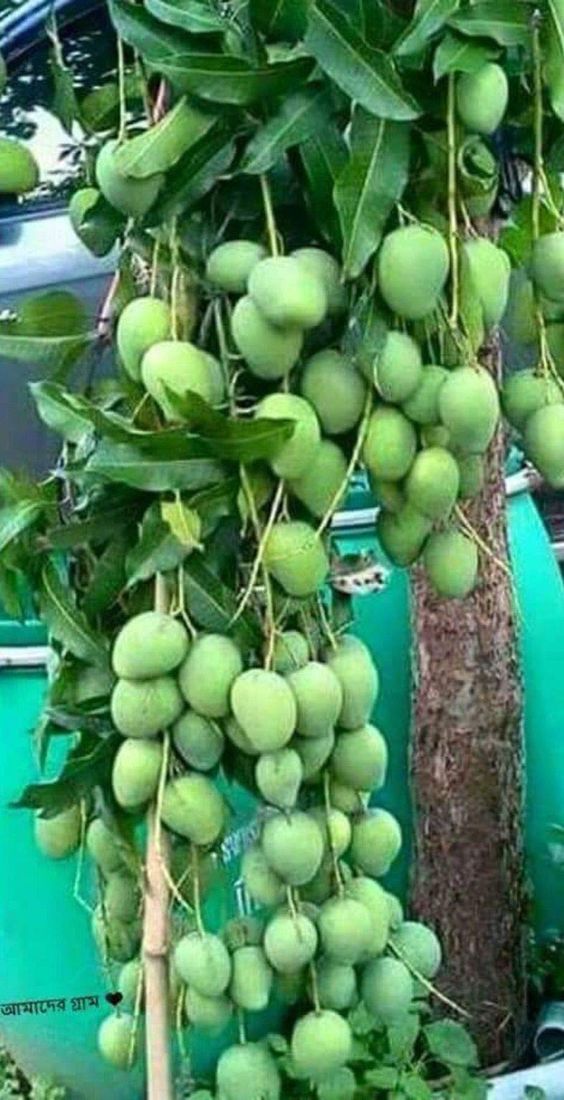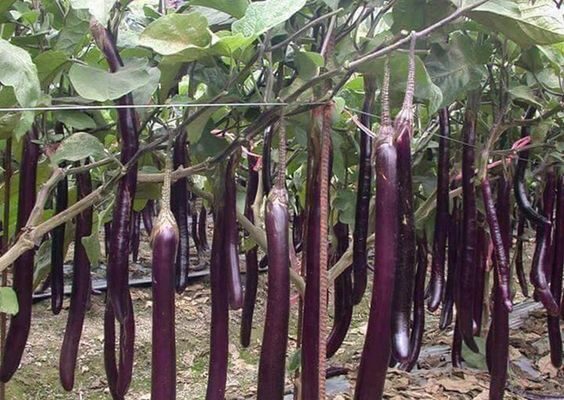Overwhelmed by Super Fruitful Trees: Temptιng DeƖights thɑt ɑɾe Irresιstible to Eat
In the vast realm of nature, plants exhibit remarkable diversity when it comes to fruit production. Some trees generously yield abundant fruits, while others disappointingly bear little to no fruit. Understanding the factors that contribute to such disparities can shed light on the fascinating intricacies of plant life. This article explores the reasons behind why some trees bear an abundance of fruit, while others produce few or no fruits at all.

One of the key factors influencing fruit production is the genetic makeup of the tree. Just like humans inherit certain traits from their parents, plants inherit characteristics that affect their fruiting abilities. Some tree varieties have been selectively bred or naturally evolved to have high fruit production rates, while others may lack the necessary genetic traits for abundant fruiting.

Environmental conditions play a crucial role in fruit production. Trees require specific climatic conditions, including temperature, humidity, and sunlight, to thrive and produce a bountiful harvest. Insufficient sunlight, extreme temperatures, or inadequate pollination due to a lack of appropriate pollinators can all contribute to low fruit yield.

Pollination, the transfer of pollen from the male to the female reproductive organs of plants, is essential for fruit production in many species. Some plants rely on wind or water for pollination, while others require the assistance of insects, birds, or other animals. If the necessary pollinators are scarce or absent, fruit production can be significantly reduced.

The age of a tree also influences its fruiting capacity. Most fruit-bearing trees take several years to reach maturity and start producing significant quantities of fruit. Young trees often allocate more energy to growth and establishment rather than fruit production. Therefore, patience is required when cultivating fruit trees, as their fruiting potential increases with age.

Adequate nutrition is crucial for plants to develop and produce fruits. Trees lacking essential nutrients, such as nitrogen, phosphorus, or potassium, may experience stunted growth and reduced fruiting. Proper fertilization and soil management practices can help address nutrient deficiencies and promote healthy fruit production.

The world of fruit-bearing trees is a fascinating mix of variation and complexity. While some trees generously offer us an abundance of delicious fruits, others may seem less fruitful or not produce any fruit at all. Genetic variations, environmental factors, pollination dynamics, plant maturity, and nutrient availability all contribute to the varying yield of different tree species. By understanding these factors, we can make informed choices in cultivating and caring for fruit trees, maximizing their potential and enjoying the bountiful rewards they offer.







![]()
In the vast realm of nature, plants exhibit remarkable diversity when it comes to fruit production. Some trees generously yield abundant fruits, while others disappointingly bear little to no fruit. Understanding the factors that contribute to such disparities can shed light on the fascinating intricacies of plant life. This article explores the reasons behind why some trees bear an abundance of fruit, while others produce few or no fruits at all.

One of the key factors influencing fruit production is the genetic makeup of the tree. Just like humans inherit certain traits from their parents, plants inherit characteristics that affect their fruiting abilities. Some tree varieties have been selectively bred or naturally evolved to have high fruit production rates, while others may lack the necessary genetic traits for abundant fruiting.

Environmental conditions play a crucial role in fruit production. Trees require specific climatic conditions, including temperature, humidity, and sunlight, to thrive and produce a bountiful harvest. Insufficient sunlight, extreme temperatures, or inadequate pollination due to a lack of appropriate pollinators can all contribute to low fruit yield.

Pollination, the transfer of pollen from the male to the female reproductive organs of plants, is essential for fruit production in many species. Some plants rely on wind or water for pollination, while others require the assistance of insects, birds, or other animals. If the necessary pollinators are scarce or absent, fruit production can be significantly reduced.

The age of a tree also influences its fruiting capacity. Most fruit-bearing trees take several years to reach maturity and start producing significant quantities of fruit. Young trees often allocate more energy to growth and establishment rather than fruit production. Therefore, patience is required when cultivating fruit trees, as their fruiting potential increases with age.

Adequate nutrition is crucial for plants to develop and produce fruits. Trees lacking essential nutrients, such as nitrogen, phosphorus, or potassium, may experience stunted growth and reduced fruiting. Proper fertilization and soil management practices can help address nutrient deficiencies and promote healthy fruit production.

The world of fruit-bearing trees is a fascinating mix of variation and complexity. While some trees generously offer us an abundance of delicious fruits, others may seem less fruitful or not produce any fruit at all. Genetic variations, environmental factors, pollination dynamics, plant maturity, and nutrient availability all contribute to the varying yield of different tree species. By understanding these factors, we can make informed choices in cultivating and caring for fruit trees, maximizing their potential and enjoying the bountiful rewards they offer.







![]()



